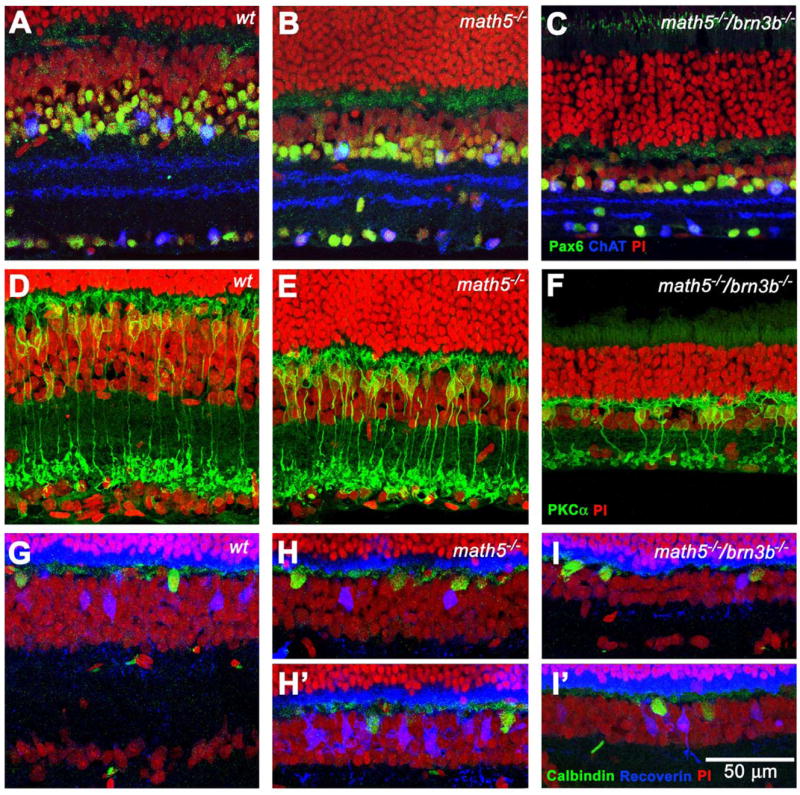Fig. 3.

Cross sections showing different cell populations in the inner nuclear layer (INL) in the adult retinas. A, B, and C, Pax6 and ChAT labeling reveals an amacrine cell population in the INL of three different genotypes. There is a significant reduction of Pax6-positive cells in the Math5-deficient retina. These cells are further reduced in number in the Math5/Brn3b-deficient retina. However, the number of ChAT-positive cells is slightly increased. These cells are unevenly distributed in the Math5/Brn3b-deficient retina. D, E, and F, PKCα labeling reveals a rod bipolar cell population. There is no significant difference of rod bipolar cells between Math5-deficient and wildtype retinas. In the double null retina, not only is the rod bipolar cell number significantly reduced, they also form small aggregates. G, H, and I, Calbindin and recoverin labeling show horizontal cells and cone bipolar cells, respectively. H & I were collected from the central retina. H′ & I′ were collected from the peripheral retina. Uneven planar distribution of both cell types can be seen in both Math5- and Math5/Brn3b-deficient retinas.
